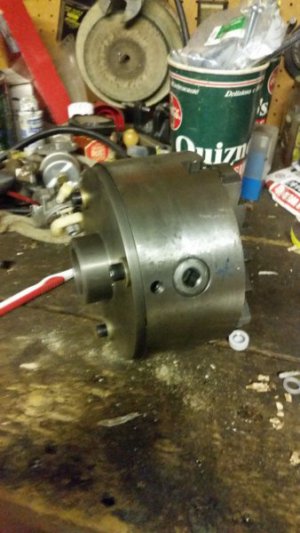To further elaborate on the regrinding job, I have found that most internal grinding wheels that I have come across are too hard of a grade of abrasive, and they quickly glaze over and chatter badly. More or less by accident I found that a marked reduction in RPM makes the wheels act softer than their apparent hardness rating; I used a combination ID/OD tool post grinder that ran 3450 RPM, much less than the approx. 12,000 RPM rating of internal wheels around 1 1/2" diameter; when used with the extension spindle that screwed onto the tool post grinder shaft and used on chuck jaws, hardly any sparks resulted, but grinding was rapid; this was a defining moment! Look on the Dumore grinder speed chart and see what is recommended for your size wheel, try it, and if you experience dulling and chatter, try reducing the speed until the wheel settles down to work and grinds efficiently. Generally grinding wheels act harder with more speed and softer with less speed; when speeding up a wheel, of course the maximum RPM should not be exceeded unless the wheel is worn down in diameter; feet per minute surface speed defines the upper limit.

